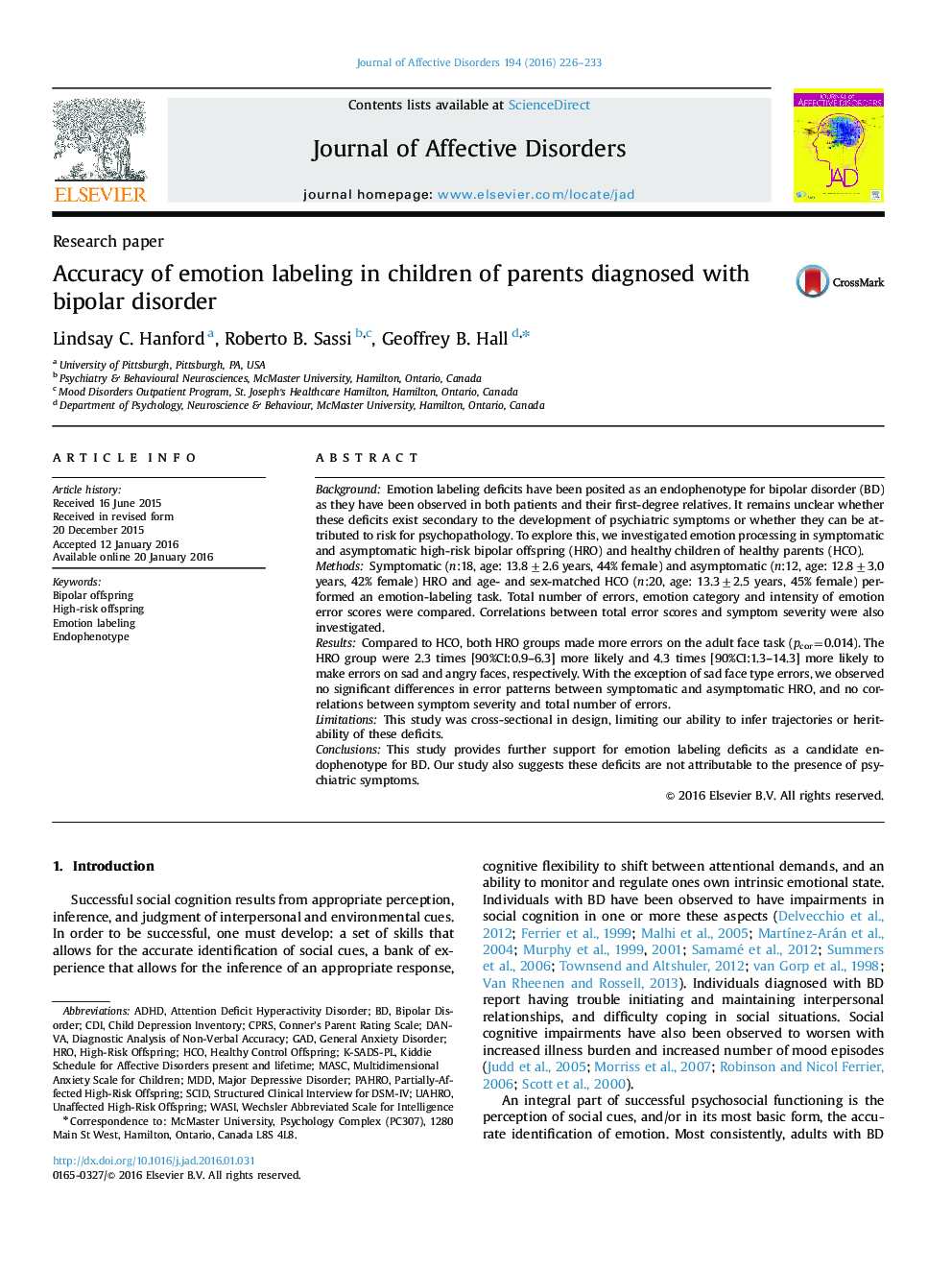| کد مقاله | کد نشریه | سال انتشار | مقاله انگلیسی | نسخه تمام متن |
|---|---|---|---|---|
| 4185877 | 1608131 | 2016 | 8 صفحه PDF | دانلود رایگان |
• Emotion labeling deficits were compared in high-risk bipolar offspring.
• We directly compared symptomatic and asymptomatic high-risk offspring.
• High-risk offspring showed poorer performance overall and on sad and angry faces.
• Emotion labeling errors were not associated with the presence of psychiatric symptoms.
BackgroundEmotion labeling deficits have been posited as an endophenotype for bipolar disorder (BD) as they have been observed in both patients and their first-degree relatives. It remains unclear whether these deficits exist secondary to the development of psychiatric symptoms or whether they can be attributed to risk for psychopathology. To explore this, we investigated emotion processing in symptomatic and asymptomatic high-risk bipolar offspring (HRO) and healthy children of healthy parents (HCO).MethodsSymptomatic (n:18, age: 13.8±2.6 years, 44% female) and asymptomatic (n:12, age: 12.8±3.0 years, 42% female) HRO and age- and sex-matched HCO (n:20, age: 13.3±2.5 years, 45% female) performed an emotion-labeling task. Total number of errors, emotion category and intensity of emotion error scores were compared. Correlations between total error scores and symptom severity were also investigated.ResultsCompared to HCO, both HRO groups made more errors on the adult face task (pcor=0.014). The HRO group were 2.3 times [90%CI:0.9–6.3] more likely and 4.3 times [90%CI:1.3–14.3] more likely to make errors on sad and angry faces, respectively. With the exception of sad face type errors, we observed no significant differences in error patterns between symptomatic and asymptomatic HRO, and no correlations between symptom severity and total number of errors.LimitationsThis study was cross-sectional in design, limiting our ability to infer trajectories or heritability of these deficits.ConclusionsThis study provides further support for emotion labeling deficits as a candidate endophenotype for BD. Our study also suggests these deficits are not attributable to the presence of psychiatric symptoms.
Journal: Journal of Affective Disorders - Volume 194, April 2016, Pages 226–233
